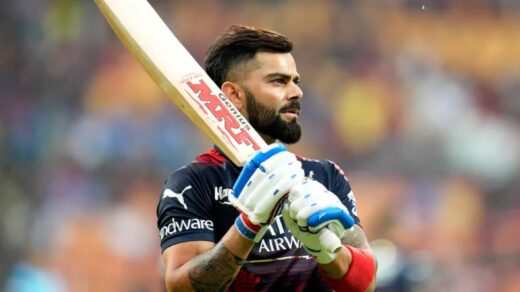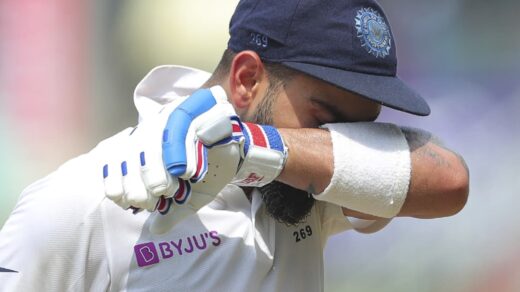If you’ve ever watched a One Day International (ODI) or T20 match and wondered why the first few overs feel so electric, it’s because of the Powerplay.
This special phase of the game forces fielding teams to keep most players close to the pitch, giving batsmen more freedom to attack.
What Is Powerplay in Cricket? Simply put, it’s a set of overs where strict fielding restrictions apply, creating opportunities for aggressive batting and smart bowling strategies.
This phase often decides whether a team posts a massive total or gets bowled out cheaply.
What Is Powerplay in Cricket? Rules, Overs & Fielding Restrictions

Let’s dive into everything you need to know about Powerplay rules, how they work in different formats, and why they matter so much.
Understanding What Is Powerplay in Cricket – The Basics
Powerplay is a term used in limited-overs cricket to describe specific overs where the fielding team cannot place more than a certain number of players outside the inner circle (30-yard circle).
Think of it this way: when most fielders are forced to stay inside, batsmen get more gaps to hit through.
Boundaries become easier. But at the same time, bowlers can use this to their advantage by taking early wickets when batsmen try risky shots.
What is Powerplay in Cricket in simple terms? It’s cricket’s way of making the game more entertaining by balancing attack and defense right from the start.
How Powerplay Works in ODI Cricket?
ODI cricket has a detailed structure of ODI powerplay rules. Unlike T20s, a 50-over match is divided into three distinct fielding restriction phases.
Breaking Down the Three Phases
- First Powerplay (Overs 1–10): Only 2 fielders are allowed outside the 30-yard circle. This is when batting teams try to score quickly because fielding is restricted. Teams often score 50-70 runs in this phase if they bat well.
- 2nd Powerplay in ODI (Overs 11–40): Now, 4 fielders can stay outside the circle. This phase is longer, and teams need to balance risk and stability. Captains spread the field to control run flow while batsmen rotate strike and wait for loose balls.
- 3rd Powerplay in ODI (Overs 41–50): In the final 10 overs, 5 fielders can be placed outside the circle. This is the death overs phase, where batsmen go all out to maximize the score.
Simple Table: Power Play Overs in ODI
| Phase | Overs | Fielders Outside Circle | Purpose |
|---|---|---|---|
| 1st Powerplay | 1–10 | 2 | Aggressive start |
| 2nd Powerplay | 11–40 | 4 | Consolidation |
| 3rd Powerplay | 41–50 | 5 | Final assault |
How Many Powerplay in 50 Overs Match?
Technically, there are three phases in a 50-over match, though only the first 10 overs are called “Powerplay” in casual cricket talk. The powerplay in cricket ODI format is designed to keep the match interesting throughout all 50 overs.
Powerplay in T20 Cricket
T20 cricket keeps things simple and fast. The power play rules in T20 cricket are straightforward:
- Only the first 6 overs are Powerplay overs
- Just 2 fielders allowed outside the 30-yard circle
- Batsmen go hard from the first ball
- Bowlers try to strike early
Because T20 matches are only 20 overs per side, every ball in the Powerplay counts. Teams scoring 50+ runs in the first 6 overs usually have a strong chance of posting big totals like 180 or 200.
Why Powerplay Is So Important?
- 1. Sets the Match Momentum
A strong Powerplay start gives confidence to the batting team. If openers score quickly, middle-order batsmen can play more freely later.
- 2. Early Wickets Change Everything
For bowlers, getting 2-3 wickets in the Powerplay can put huge pressure on the opposition. Suddenly, they’re forced to rebuild rather than attack.
- 3. Captain’s Tactical Battle
Where to place fielders? Which bowler to use? Should a spinner come early? Captains make crucial decisions during this phase.
- 4. Entertainment Value
Fans love the Powerplay because it’s action-packed. Big sixes, risky shots, close catches—it all happens here.
Batting Strategy During Powerplay
How Batsmen Approach Powerplay:
- Go after loose deliveries – With fielders inside, any slightly short or wide ball is a boundary opportunity
- Target specific bowlers – If one bowler is struggling, batsmen attack him repeatedly
- Rotate strike smartly – Not every ball needs a boundary; singles keep the scoreboard ticking
- Watch for swing – In ODIs, especially, new balls swing. Good batsmen wait before going big
- Use the feet – Against spinners, stepping out can unsettle their length
Bowling Strategy During Powerplay
How Bowlers Try to Control Powerplay:
- Bowl tight lines – Even if fielders are inside, a good line and length forces batsmen to take risks
- Use swing and seam – New ball movement can get edges and early wickets
- Attack the stumps – LBW and bowled dismissals are more likely when batsmen play across the line
- Mix up pace – Slower balls or bouncers can surprise aggressive batsmen
- Bring spinners early – Some teams use spinners in Powerplay on turning pitches to choke runs
Famous Powerplay Moments in Cricket History
- Chris Gayle’s 17-ball fifty: Gayle has destroyed many Powerplay attacks in T20 leagues. His ability to clear the infield with ease makes him one of the most feared Powerplay batsmen.
- India’s 2003 World Cup Powerplays: India’s openers consistently gave strong starts during the 2003 tournament, setting up big totals. Sachin Tendulkar and Sourav Ganguly dominated the early overs.
- Pakistan’s 2017 Champions Trophy Run: Pakistan’s bowling attack used the Powerplay brilliantly to take early wickets, especially in the final against India.
Powerplay in Cricket Fielding Rules – Key Points
Understanding powerplay in cricket fielding rules helps you appreciate the tactics:
- 30-yard circle rule: The inner fielding circle is drawn 30 yards from the stumps
- Maximum 2 fielders outside during Powerplay overs
- At least 2 fielders must be in catching positions (slips, gully, etc.) in ODIs
- No illegal field placements: Umpires strictly monitor fielding positions
These rules ensure batsmen get genuine scoring opportunities while bowlers still have a chance to attack.
FAQs About Powerplay in Cricket
- 1. What Is Powerplay in Cricket?
Powerplay is a phase in limited-overs cricket where fielding restrictions apply. Only a limited number of fielders can be placed outside the 30-yard circle, encouraging aggressive batting.
- 2. How many Powerplay overs are there in ODI cricket?
The first 10 overs are called Powerplay in ODI cricket. However, the entire 50-over match is divided into three fielding restriction phases.
- 3. What are the power play rules in T20 cricket?
In T20 matches, the Powerplay lasts for the first 6 overs with only 2 fielders allowed outside the 30-yard circle.
- 4. What happens in the 2nd Powerplay in ODI?
From overs 11-40, up to 4 fielders can be placed outside the circle. This phase focuses on building innings and controlling run rate.
- 5. Why is Powerplay important in cricket?
Powerplay sets the tone for the entire innings. Teams that perform well during this phase—whether batting or bowling—often control the match outcome.
Final Thoughts:
What is Powerplay in Cricket? It’s more than just a set of rules—it’s the phase where matches come alive.
Whether it’s the first 10 overs of an ODI or the opening 6 overs of a T20, the Powerplay demands courage from batsmen, skill from bowlers, and smart thinking from captains.
Understanding these rules makes watching cricket even more enjoyable. Next time you watch a match, pay close attention to the Powerplay.
Notice how teams approach it differently based on pitch conditions, opposition, and match situation.
The Powerplay is where legends are made and matches are won or lost. And that’s what makes cricket such a beautiful game.








